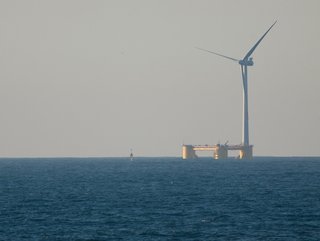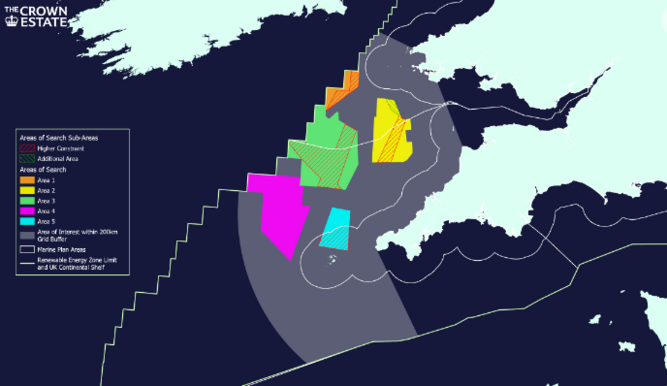Celtic Sea floating offshore wind farms to tender mid-2023

Five floating offshore wind sites have been identified in the Celtic Sea, off Cornwall and south Wales, by The Crown Estate.
Further stakeholder and market feedback will be used to refine the Areas of Search into smaller project development areas, within which the first generation of commercial-scale floating windfarms could be built.
These project development areas, which could deliver 4GW of floating offshore wind power by 2035, will be offered to the market via competitive tender in mid-2023.

In recognition of the UK’s ambitious net zero agenda, The Crown Estate will be tendering larger, 1GW-scale projects which may be developed in a phased or ‘stepping stone’ approach.
This proposed leasing round will play a key role in realising green energy ambitions in the Celtic Sea. Separate new research commissioned by The Crown Estate indicates that the Celtic Sea has the economic potential to accommodate up to an additional 20GW of floating offshore wind capacity by 2045.
Nicola Clay, Head of New Ventures Marine at The Crown Estate, said the focus in its current programme is on phasing in the proposed 4GW of floating wind power which will support the future growth of the sector.
"It gives visibility to a long-term pipeline that will support investment in the regional supply chain and infrastructure, contribute significantly to UK energy security, and help projects in the Celtic Sea reach a scale where they can become more cost-competitive," she said.
“As we look to refine the areas of search and progress the Habitats Regulations Assessment, we will continue to collaborate with government and other key stakeholders to hasten delivery and create lasting social, economic, and environmental prosperity for the nation.”
Celtic Sea has 'great renewable energy basin' potential
Huub den Rooijen, Managing Director Marine at The Crown Estate, said the Celtic Sea has the potential to become one of the great renewable energy basins of the world, bringing economic growth and abundant clean power.
"This leasing round is a first step, and we need to work together to bring technology costs down, deliver environmentally sound solutions, and respect the needs of the many other users of the marine space," he said.
Greg Hands MP, Energy and Climate Change Minister, said the UK already has the largest offshore wind deployment in Europe. "Floating technology is key to unlocking the full potential of our coastline," he said. “We want to deliver up to 5GW of floating offshore wind by 2030. These projects can help power millions of homes with clean, and cheaper, renewable energy, reducing reliance on expensive fossil fuels.”
Julie James MS, Welsh Minister for Climate Change, said its support for emerging technologies and innovation, including offshore marine energy, sit at the heart of our Programme for Government.
“In the short term, we believe offshore wind will provide fantastic economic and social regeneration opportunities," she said.
Work to date suggests that up to 1,400 full time equivalent jobs could be sustained by 500MW of floating offshore wind projects.






